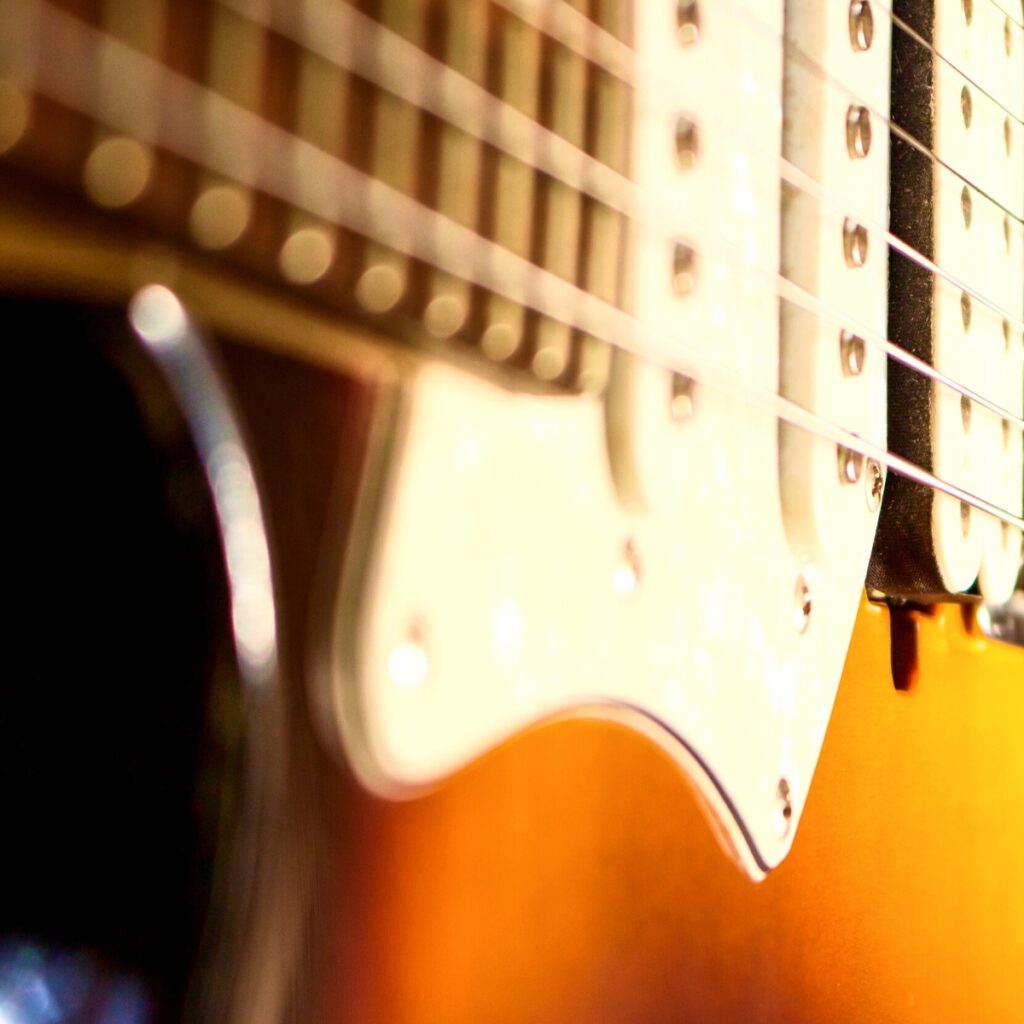Lacquer is a slow-drying, fast-drying, or semi-hardening material made from refined resin. It’s used to seal, protect, and beautify wood, metal, and other materials. Lacquer can be used in a variety of ways to finish your guitar.
In this guide, I’ll go over the different types and share my favorite uses.

The Benefits of Applying a Finish to Your Guitar
Aesthetics
When it comes to making your guitar look good, there are two main types of finishes you can choose from: glossy and matte. A glossy finish will give your guitar a shiny, reflective look, while a matte finish will give it a more solid look. And if you’re looking to emphasize the grain of the wood and give your guitar a vintage vibe, you’re in luck – certain finishes can do just that!
Protection
Applying a finish to your guitar isn’t just about looks – it’s also about protection. You see, wood is a delicate material, and it can easily be affected by things like moisture and temperature changes. This can cause the wood to warp, crack, and even rot.
That’s why finishes are so important – they help to keep your guitar in tip-top shape by:
- Sealing in the qualities of the tonewoods
- Preventing the wood from decaying too quickly
- Keeping your guitar safe from the elements
So if you want your guitar to last for years and years, make sure you give it the protection it needs by applying a finish.
Lacquer Finishes
Lacquer is a general term that describes a few different types of finishes. These finishes are usually applied in multiple layers and then polished to a high shine. The main benefit of lacquer is that it’s relatively easy to repair. If you scratch or chip the finish, you can simply sand it down and apply a new layer.
The History of Lacquer Finishes
The Ancient Beginnings
Humans have been protecting wood and bringing out its natural beauty for centuries. While we don’t know exactly when man-made wood finishes began, we do know that there are some gorgeous examples of lacquer finishes from China that date back to the 4th century BC. Some archeological digs in China even suggest that lacquer has been around for as long as 8,000 years!
The Science Behind Lacquer
The idea behind lacquer finishes is to create a protective layer between the elements and the wood. This is done by applying a resin that is suspended in a liquid, which then evaporates away, leaving the hardened resin bonded to the wooden surface. The resin used is called urushiol, which is a mixture of various phenols and proteins suspended in water. Urushiol is slow drying, and as the water evaporates, it sets up by oxidation and polymerization, creating a tough and glossy surface.
The Evolution of Lacquer
The transparent nature of lacquer makes it perfect for applications over wood, as it highlights and enhances the grain and figure of the wood. It’s also durable and resistant to damage from water, acid, and abrasion. Applying lacquer requires a great deal of skill and knowledge, and the secrets of the process have been carefully guarded for centuries.
Once lacquer was developed, various powders or dyes could be added for translucent or opaque color. Iron oxides were used for red or black coloration, and cinnabar was used to create the traditional red lacquerware from China.
In Korea and Japan, similar finishes were developed around the same time, though there is no agreement between scholars as to who is responsible for the original discovery.
Lacquer was also mixed with deer horn powder or ceramic powder to create a finish for the Chinese musical instrument, the Guqin. This increased the surface strength and made it better able to withstand fingering.
The West Gets In On The Action
As products with lacquer finishes made their way to the West in the 1700s, Europeans developed their own processes to imitate the smooth and lustrous result. This process became known as ‘Japanning’ and consisted of several coats of varnish, each of which was heat dried and polished.
So there you have it – the fascinating history of lacquer finishes! Who knew that protecting wood could be so interesting?
Conclusion
Lacquer is a great option for guitar finishes, as it provides a beautiful, glossy sheen that will last for years. Plus, you can get creative with it and add dyes or powders for a unique look. So, if you’re looking for a way to make your guitar stand out, lacquer is definitely the way to go! Just remember to use proper safety precautions when handling the resin, and don’t forget to ROCK ON!
I'm Joost Nusselder, the founder of Neaera and a content marketer, dad, and love trying out new equipment with guitar at the heart of my passion, and together with my team, I've been creating in-depth blog articles since 2020 to help loyal readers with recording and guitar tips.

